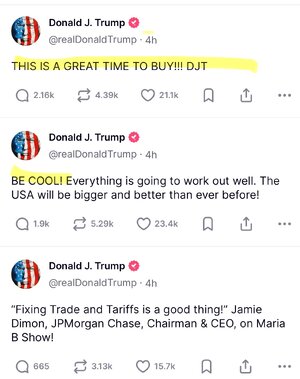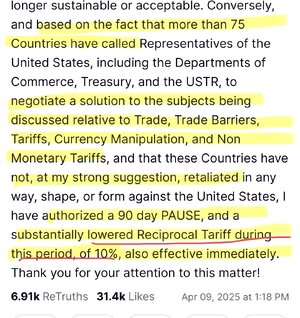- Messages
- 3,697
I was watching live as Bessent attempted to explain this shit earlier and I posted "Bessent looks like a fool." So yeah.Bespoke trade deals? Who the fuck does he think he's fooling? Anyone who knows what a "bespoke trade deal" is supposed to mean knows already that trade deals are all bespoke, all the product of extensive and detailed negotiation, and all finely tuned.
This goading argument would in most years shockingly stupid but in 2025 it's just Wednesday.



